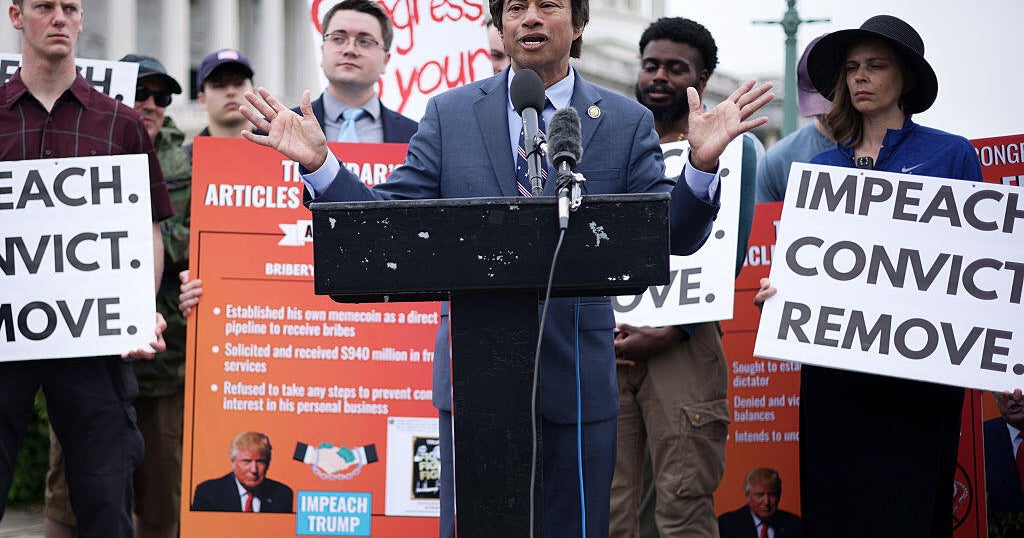In a surprising turn of events, Democratic Representative Shri Thanedar from Michigan has shelved his motion to impeach former President Donald Trump. The decision came after his proposal faced a lack of support from his own party. Initially filed in April, Thanedar’s contentious resolution was anticipated to be debated this week but ultimately fell flat following discussions with fellow Democrats.
| Article Subheadings |
|---|
| 1) The Impeachment Proposal |
| 2) Lack of Support from Party Leaders |
| 3) Public Sentiment and Individual Perspectives |
| 4) Historical Context of Trump’s Impeachment |
| 5) Future Implications and Ongoing Efforts |
The Impeachment Proposal
Representative Shri Thanedar introduced a motion in April that comprised seven articles of impeachment against Donald Trump. These articles accused Trump of various offenses, including obstructing justice and violating First Amendment rights. The intent behind this ambitious move was to galvanize support within the House of Representatives to hold Trump accountable for what Thanedar termed “impeachable crimes.” However, the journey from proposal to a debate-ready motion was more complicated than anticipated. On Tuesday, he sought to bring his resolution up for a privileged vote, necessitating action within two legislative days, aiming to spur immediate discussions on the articles of impeachment.
Lack of Support from Party Leaders
Thanedar’s initiative quickly hit a wall, facing substantial opposition from House Democratic leadership. Initial supporters of the resolution, including three Democratic co-sponsors, withdrew their endorsements after consulting with their party leaders, citing a lack of approval from the party hierarchy. Pete Aguilar, the Democratic caucus chair, articulated widespread concern within the party regarding the feasibility of pursuing impeachment, particularly given the Republican majorities in both chambers of Congress. “This is not the right approach we should be taking,” Aguilar asserted, signaling that Democratic leadership planned to stand alongside Republicans to quash the impeachment motion.
Public Sentiment and Individual Perspectives
Amidst diminishing party support, Thanedar expressed his resolve at a news conference, noting that many constituents across the country view this moment as a critical opportunity for accountability. He articulated frustration with those dismissing his calls for impeachment, indicating that he received substantial backing from segments of the public who believe in the necessity of holding the former president accountable. “People all over the country are saying this is the right time to do it!” he proclaimed, suggesting a disconnect between party leadership and the electorate. Thanedar maintained that he would continue to advocate for his articles of impeachment despite the internal party challenges.
Historical Context of Trump’s Impeachment
The backdrop of Thanedar’s impeachment effort is significant. Donald Trump has already faced two impeachments during his presidency—one in 2019 linked to his dealings with Ukraine and another in 2021 tied to the Capitol riot. In both instances, he was acquitted by the Senate. Such historical context adds layers to the current sentiment, with political analysts noting that Trump’s past experiences with impeachment may deter representatives from attempting a third. Furthermore, House Speaker Mike Johnson dismissed Thanedar’s motion as merely an “embarrassing political stunt,” highlighting skepticism regarding the legitimacy of the motion itself.
Future Implications and Ongoing Efforts
Despite the setback, Thanedar indicated he would not abandon his quest for impeachment. He expressed intentions to refine his articles and continue gathering bipartisan support for future actions. This commitment reflects an ongoing theme among certain Democratic representatives, as Rep. Al Green of Texas has expressed similar sentiments regarding the necessity to pursue impeachment against Trump during his current term. As the political climate shifts and evolves, the implications of such efforts may resonate beyond congressional chambers, influencing public discourse and future electoral strategies.
| No. | Key Points |
|---|---|
| 1 | Rep. Shri Thanedar attempted to impeach former President Donald Trump with seven articles of impeachment. |
| 2 | Democratic leaders quickly distanced themselves from Thanedar’s resolution due to a lack of party backing. |
| 3 | Thanedar emphasized public support for impeachment, despite internal opposition. |
| 4 | Trump has already faced impeachment twice during his presidency but was acquitted both times. |
| 5 | Thanedar aims to revisit the articles of impeachment to gather bipartisan support moving forward. |
Summary
The recent developments surrounding Rep. Shri Thanedar‘s efforts to impeach former President Donald Trump highlight the complexity of political accountability in the current climate. With diminishing support from party leaders and historical patterns of acquittal following impeachment, the future of such initiatives remains uncertain. Nonetheless, Thanedar’s firm stance on the public’s desire for action reflects a vital discourse within the party, signaling both a struggle and a determination to navigate governance challenges effectively.
Frequently Asked Questions
Question: What were the main allegations in Thanedar’s impeachment articles?
Thanedar’s articles accused Trump of obstructing justice, abusing presidential power, and violating First Amendment rights, among other offenses.
Question: Why did Democrats withdraw support from the impeachment motion?
Democrats expressed a lack of feasibility for the motion due to the Republican control of Congress and the failure to gain leadership approval.
Question: What has been the historical context of Trump’s impeachment attempts?
Trump was impeached twice during his presidency and acquitted both times, setting a complex precedent that affects current and future impeachment discussions.


